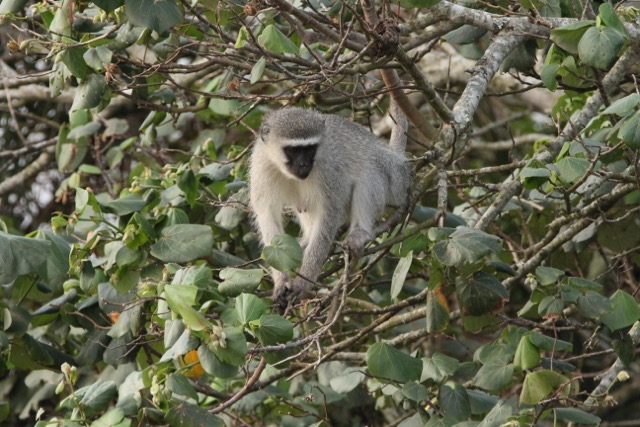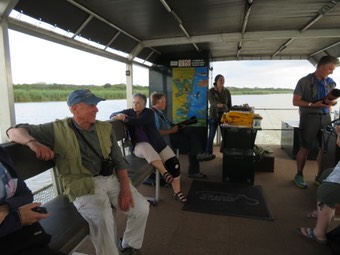
When we arrived in Saint Lucia, our host at the Inn told us we had 20 minutes to get to the expedition on the estuary that was planned. Fortunately, it was only 5 minutes away so we had plenty of time. We boarded a flat bottomed boat and headed out onto the water.
We got quite close to a few hippopotami, they seemed to be playing by having mock fights. Our guide told us they teach the young by reenacting what they will need to know when they are adults. A large male adult can open its mouth about 3 feet wide and bite with enormous force. In the pictures below you can see the lower teeth (tusks are large and can inflict lethal damage). Our guide told us they cause more human deaths than any other wild animal. They are very territorial and will often fight other hippos to the death. Hippos are enormous beasts. They spend most of their time in water, often in shallow water. The hippos can apparently run on the bottom of the water up to 25 km/hour (15 mph). On land they can run 45 km/hour (27 mph). I asked Naas how long they could sustain that speed and he told me longer than I could (which is certainly true).
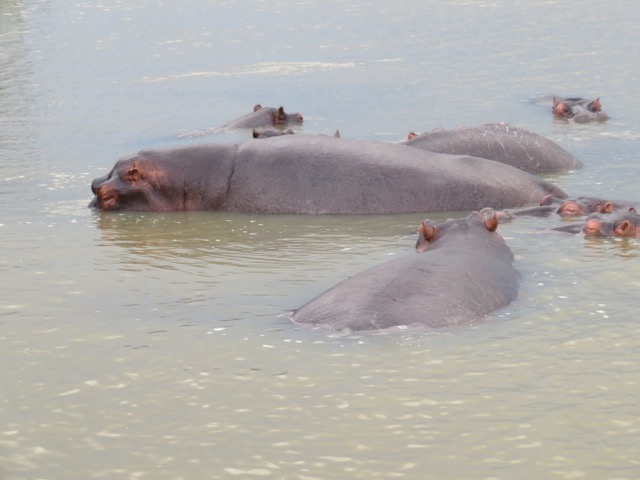
Hippos live in groups with a defined territory. This particular group had tens of hippos. In this picture, you can see 8. They are accustomed to the boats and generally do not bother them, even if they are very close. Occasionally, the boats will bump into a hippo. The boats are designed to not seriously hurt them if that happens.
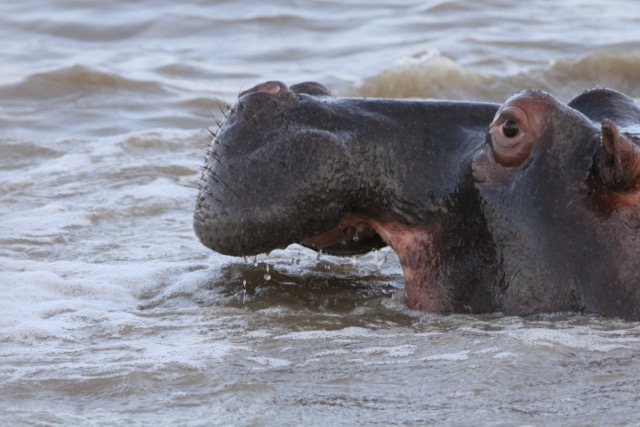

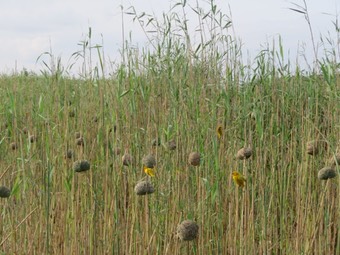
We saw a group of weaver birds. They make their nests with the opening on the bottom to protect the eggs and the babies from the rain. The males build the nests and then attract females. The females check out the nests and if they are not built well enough they not only reject the nest and the male, they also destroy the nest. Hell hath no fury like a picky weaver bird.
From the picture on the right you can see a dozen or more nests and at least two weavers.
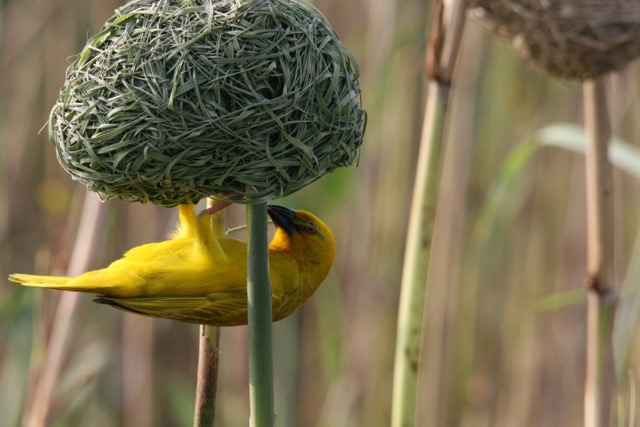
This weaver has a blade of grass in this beak.
We saw several other species of birds.
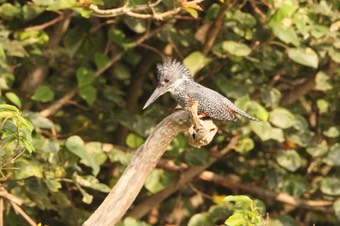
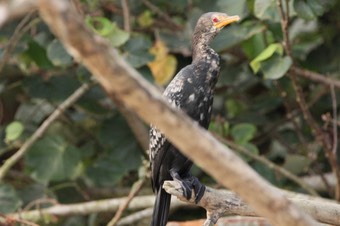
Kingfisher Cormorant (?)
And, we saw other water animals.
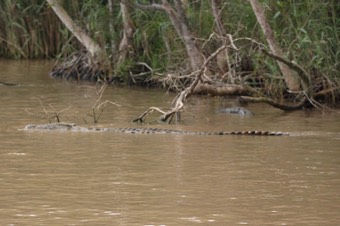

Crocodile Bull Shark
And, we saw some monkeys.
